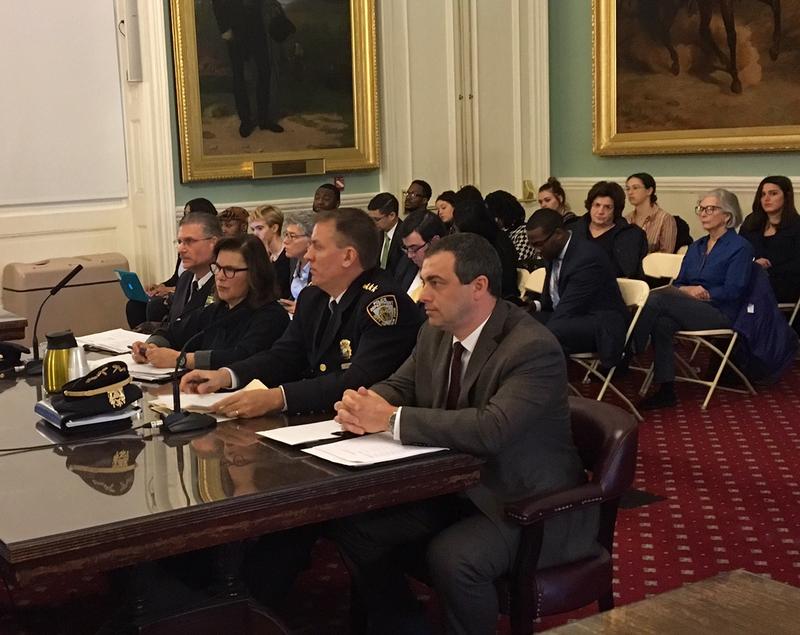
For years, the vast majority of those arrested for marijuana possession or smoking in New York City have been disproportionately black and Latino — about 85 percent. Those numbers have held steady despite studies finding whites are just as likely to use the drug.
On Monday, city council members scheduled a hearing to find out why those discrepancies are so consistent, and they didn't like the NYPD's explanation.
Dermot Shea, the NYPD's Chief of Crime Control Strategies, attributed the numbers to complaints by the public. He said enforcement was determined by complaints to 911 and 311 about marijuana, and that maps of those calls overlapped with both arrests and summonses (which allow offenders to avoid arrest and jail time).
"In 2017, there were nearly 26,000 911 calls complaining about the use of marijuana, an increase of 12 percent from 2016," he explained. Shea added that 311 calls, while fewer, also "significantly increased" last year.
But several council members were incredulous that both arrests and summonses were attributed entirely to complaints. Queens councilman Donovan Richards, whose district includes neighborhoods on the Nassau border that have had among the highest number of marijuana summonses, suggested that could only happen if someone was repeatedly calling 911.
"This is a working class neighborhood. We refuse to believe people are home all day saying we smell marijuana," he said of the 105th Precinct. "You're not seeing gangs of people just walking up and down blocks smoking marijuana, it's not a reality."
Councilwoman Deborah Rose of Staten Island also noted that it takes a little while for police to respond after a call to 911.
"By the time you get there unless it's an extra long burning blunt they would no longer be burning," she said, prompting laughter.
Shea said the individuals would still be present and he denied any racial biases in enforcement. Nonetheless, he acknowledged the NYPD's call data could be imprecise when determining exactly which calls were about pot, and he said he was frustrated.
"Marijuana spelled 15 different ways," he said, citing examples of calls. "Weed. Pot. The calls about kids smoking in front of my building. Are they smoking or are they smoking marijuana?"
He also said 90 percent of those arrested are caught burning marijuana in public, not just possessing it.
Public defenders testified Monday in favor of legalizing marijuana and questioned the police statistics.
"I’ve represented hundreds of people accused of marijuana possession, and I cannot recall ever seeing any indication that even one was prompted by a 911 complaint," said Catherine Gonzalez, a staff attorney with Brooklyn Defender Services. "NYPD’s racially biased marijuana arrests are a matter of policy choice and the City should not defend this practice, but end it."
Shea told council members on the public safety and justice committees that pot arrests have declined by about 40 percent since 2013, the year before Mayor Bill de Blasio took office. Summonses (instead of arrests) for those possessing less than 25 grams of pot have also climbed, as part of de Blasio's strategy to spend less police time on low-level marijuana offenses. But possessing more than that or smoking any marijuana in public is a crime under state law, which is why he said arrests remained at about 17,000 last year.
The council is seeking more data on complaints from the public and police enforcement and wants legislation requiring the NYPD to disaggregate both summonses and arrests by demographics, borough and precinct.
The council also heard from former police officers in the Law Enforcement Action Project, who said marijuana enforcement was a waste of time.
